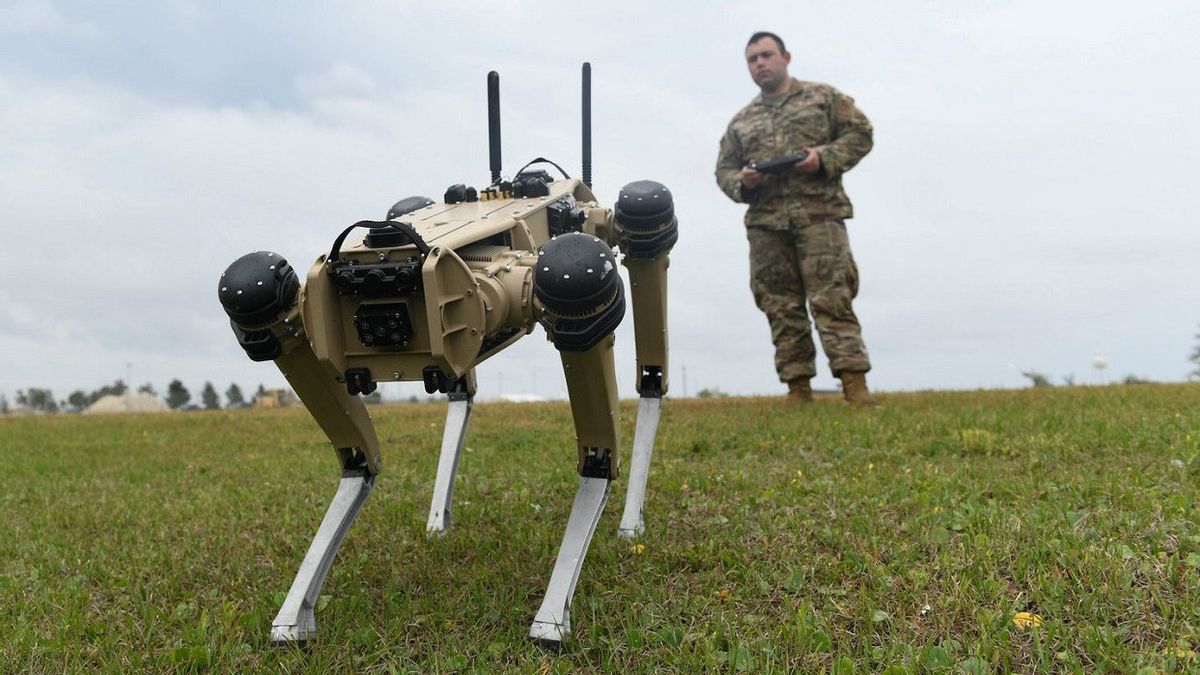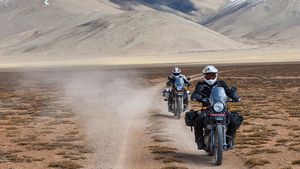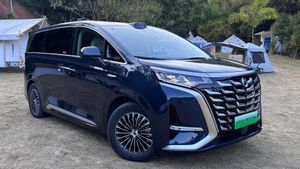JAKARTA - The United States Air Force, particularly Tyndall Air Force Base in Florida, is making new breakthroughs in the field of military technology utilization.
To strengthen the security of the area, Tyndall Air Force Base announced the use of new guard dogs. It's not just dogs, but it's a four-legged dog robot, Ghost Robotics alerts.
In military language, the robot is named Quad-legged Unmanned Ground Vehicle or Q-UGV. The specific model is referred to as Vision 60, and is part of a wider family of robots categorized by role and size.
Vision 60's four-legged design immediately reminds us of robots like dogs from Boston Dynamics. Why use bots with legs? While the military has had robots rolling on the tracks, like tanks, for years, those machines are limited in application.
Tracks are useful for crawling over uneven terrain and gaps such as trenches, but are also slow, and cannot handle steep slopes or debris-filled terrain as easily as four-legged machines.

The Vision 60's legs push it at a top speed of about 4.5 mph, or slightly faster than the walking speed of a typical person.
"As a mobile sensor platform, the Q-UGV will significantly increase situational awareness for human rights defenders. They can patrol remote areas of a base, while human rights defenders can continue to patrol and monitor other critical areas of an installation," Mark Shackley, who runs the security forces program in Tyndall, said in a release as quoted popsci.com.
Ghost describes the Vision 60 robot as semi-autonomous, meaning machines have sensors that help them navigate their own routes, while still receiving orders from humans. For its own mobility, Vision 60 usually uses lidar to laser feel the world around it.
It can also infer pressure from the electric motor on his feet, allowing him to navigate while walking on terrain he cannot see.
Jordan Criss, commander of the security forces at Tyndall, noted in November 2020 that the robot rover could be controlled from a VR headset.
"We will be able to see exactly what the robot dog detects through its mobile camera and sensor platform, if desired. We can also give verbal commands to a person or person via a radio attached to a dog," Jordan explained.
To help humans, these sensors include a stream of high-definition video, thermal imaging may also be infrared. As long as there is a data connection, video footage of the robot can be sent to an android tablet operated by a human watchdog, which can then see what the robot sees.
Like the dog he imitates, Vision 60 can crouch down and also crawl while crouching. This can help hide the robot between tall grasses or behind covers, and also allows the robot to navigate through smaller spaces.
"One of the big appeals of a dog robot is that it's very mobile and with the amount of construction we'll face over the next few years, it helps us maintain and improve our security posture," said Krystoffer Miller, who supports security services at the base.
Other efforts to use dog robots as battlefield spotters and lighter transport animals remain, and will likely benefit from what the military learns in patrols in Tyndall.
Routine exercises at the base, where robots can be easily recovered in the event of an accident, can build a useful sensor database, which in turn can train future autonomous features for four-legged robots.
The English, Chinese, Japanese, Arabic, and French versions are automatically generated by the AI. So there may still be inaccuracies in translating, please always see Indonesian as our main language. (system supported by DigitalSiber.id)













